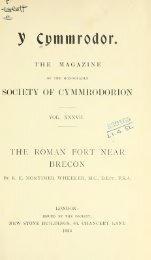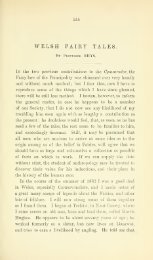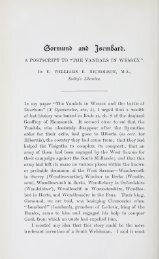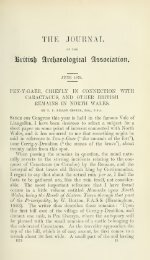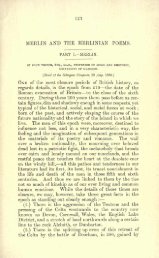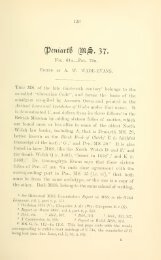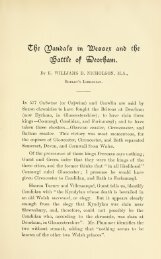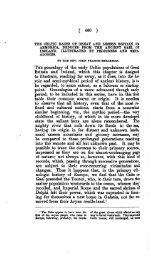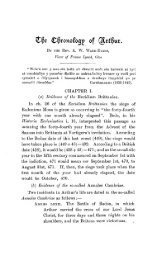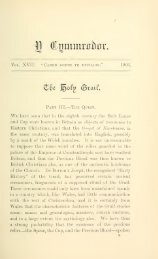An Introduction to Early Welsh - Arthur Pendragon of Wales
An Introduction to Early Welsh - Arthur Pendragon of Wales
An Introduction to Early Welsh - Arthur Pendragon of Wales
You also want an ePaper? Increase the reach of your titles
YUMPU automatically turns print PDFs into web optimized ePapers that Google loves.
42.]<br />
THE NUMERALS. 31<br />
xxi.-xcix. In O.W. trimuceint is found for thirty. The<br />
usual reckoning, however, is by multiples <strong>of</strong> twenty deugein(t)<br />
:<br />
(O.W. douceint) forty, deugeintvet fortieth, trugein(t) sixty,<br />
trugeinvet sixtieth, petwarugein(t) eighty, petwarugeinvet<br />
The intermediate numbers are expressed by addition, e.g.<br />
eightieth.<br />
tin ar hugein(t) twenty-one, dec erydyr ar hugeint thirtyploughs,<br />
detidec brenhin ar hugeint thirty-two kings, deng mlyned<br />
a feugemt fifty years, deudeng mlyned a thrugeint seventytwo<br />
years, petwyryd ar Ugeint twenty-fourth. This reckoning<br />
may extend beyond a hundred, e.g. pedeir gwlat a seith ugeint<br />
one hundred and forty-four countries.<br />
C.-CCiOD. Cant hundred, canvet hundredth. From this the other<br />
hundreds are formed by prefixing the cardinals:<br />
deucant or deugant,trichant,<br />
petwarcant, pumcant, chwechant, seithcant,<br />
wythcant, nawcant. Mil thousand, dwy vi\ = two thousand,<br />
etc. Un vlwydyn ar bymthec ar hugeint a deucant = 236<br />
chwech marchawc a thrugeint a phumcant =5&5<br />
years;<br />
horsemen ; deudeng mlyned a thrugeint ac wythcant = 872<br />
years ; deg mlyned a phetwar ugein a chant a mil = 1190<br />
years, ccioo. myrd myriad.<br />
Syntax<br />
<strong>of</strong> the Cardinals and Ordinals.<br />
42. (a) After deu, dwy, the singular (i.e. his<strong>to</strong>rically the dual<br />
25) form is regularly used ;<br />
but there are exceptions, e.g. deu<br />
ychen two oxen (where, however, the form might be dual), dwy<br />
chwiored two sisters LA. 39, RB. II. 39, dwy burloywduon<br />
hirueinon aeleu two brilliant black long slender eyebrows (by dwy<br />
ael) LA.Q3, deu rudellyon lygeit tworuddyeyes ib., deu perffeithloyw<br />
gochyon rudyeu two perfect brilliant red cheeks ib., deu<br />
nyeint two nephews RB. II. 69, dwy wraged two wives ib. 239<br />
dwy vlyned two years ib. 240. As <strong>to</strong> the higher numbers the general<br />
rule is that, if there be a plural with internal vowel change ( 27a),<br />
the plural is used, e.g. tri meib three sons, but otherwise the noun is<br />
in the singular, e.g. teir ynys three isla?ids (pi. ynysed), petwar<br />
marchawc four horsemen (pi. marchogyon). There are, however,




